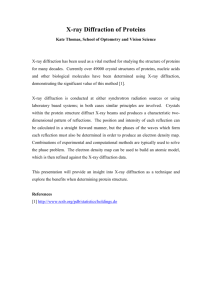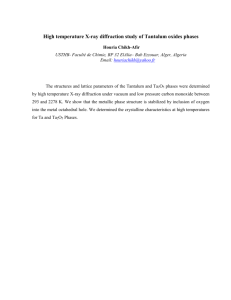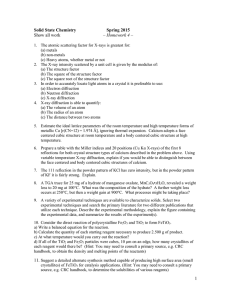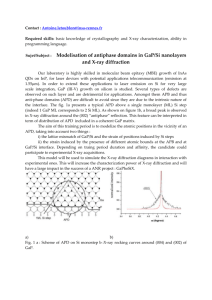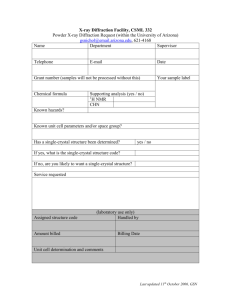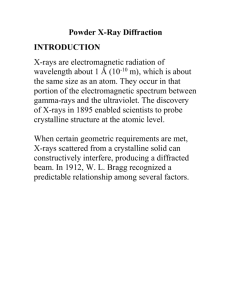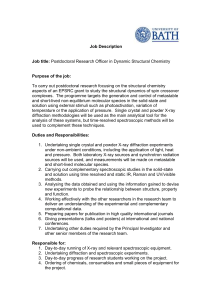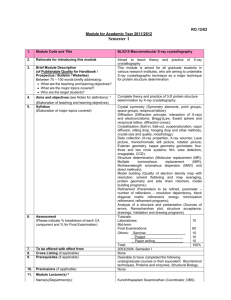ICCE-21 Short Paper - Western Michigan University
advertisement
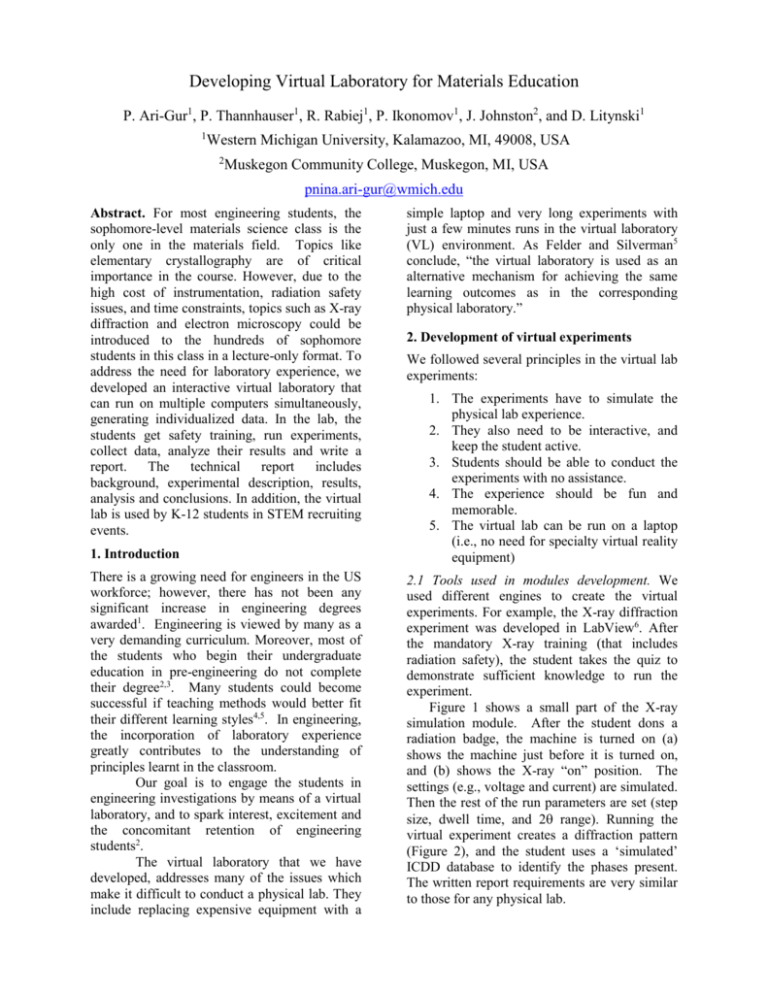
Developing Virtual Laboratory for Materials Education P. Ari-Gur1, P. Thannhauser1, R. Rabiej1, P. Ikonomov1, J. Johnston2, and D. Litynski1 1 Western Michigan University, Kalamazoo, MI, 49008, USA 2 Muskegon Community College, Muskegon, MI, USA pnina.ari-gur@wmich.edu Abstract. For most engineering students, the sophomore-level materials science class is the only one in the materials field. Topics like elementary crystallography are of critical importance in the course. However, due to the high cost of instrumentation, radiation safety issues, and time constraints, topics such as X-ray diffraction and electron microscopy could be introduced to the hundreds of sophomore students in this class in a lecture-only format. To address the need for laboratory experience, we developed an interactive virtual laboratory that can run on multiple computers simultaneously, generating individualized data. In the lab, the students get safety training, run experiments, collect data, analyze their results and write a report. The technical report includes background, experimental description, results, analysis and conclusions. In addition, the virtual lab is used by K-12 students in STEM recruiting events. 1. Introduction There is a growing need for engineers in the US workforce; however, there has not been any significant increase in engineering degrees awarded1. Engineering is viewed by many as a very demanding curriculum. Moreover, most of the students who begin their undergraduate education in pre-engineering do not complete their degree2,3. Many students could become successful if teaching methods would better fit their different learning styles4,5. In engineering, the incorporation of laboratory experience greatly contributes to the understanding of principles learnt in the classroom. Our goal is to engage the students in engineering investigations by means of a virtual laboratory, and to spark interest, excitement and the concomitant retention of engineering students2. The virtual laboratory that we have developed, addresses many of the issues which make it difficult to conduct a physical lab. They include replacing expensive equipment with a simple laptop and very long experiments with just a few minutes runs in the virtual laboratory (VL) environment. As Felder and Silverman5 conclude, “the virtual laboratory is used as an alternative mechanism for achieving the same learning outcomes as in the corresponding physical laboratory.” 2. Development of virtual experiments We followed several principles in the virtual lab experiments: 1. The experiments have to simulate the physical lab experience. 2. They also need to be interactive, and keep the student active. 3. Students should be able to conduct the experiments with no assistance. 4. The experience should be fun and memorable. 5. The virtual lab can be run on a laptop (i.e., no need for specialty virtual reality equipment) 2.1 Tools used in modules development. We used different engines to create the virtual experiments. For example, the X-ray diffraction experiment was developed in LabView6. After the mandatory X-ray training (that includes radiation safety), the student takes the quiz to demonstrate sufficient knowledge to run the experiment. Figure 1 shows a small part of the X-ray simulation module. After the student dons a radiation badge, the machine is turned on (a) shows the machine just before it is turned on, and (b) shows the X-ray “on” position. The settings (e.g., voltage and current) are simulated. Then the rest of the run parameters are set (step size, dwell time, and 2 range). Running the virtual experiment creates a diffraction pattern (Figure 2), and the student uses a ‘simulated’ ICDD database to identify the phases present. The written report requirements are very similar to those for any physical lab. into either EON Virtual Reality8 or Unity3D9 (a game design engine) 3. Conclusions Virtual laboratory experiments were developed. They were successfully tested with university students, as well as with community college and high-school students. Acknowledgements This work was made possible through NSF grant number 1140348 and two generous grants from Hewlett Packard: Technology for teaching and HP Catalyst. Many thanks to numerous people that participated in the development and collaborated with us; Special thanks to Emiliya Ikonomova, Marwa Hassan, Renee’ Schwartz, Richard Wood, Abraham Barouch, Spencer Hoin, Tyler Bayne, and Shilpa Lakhanpal (a) (b) Fig. 1. Virtual X-ray diffraction experiment (a) before the machine is in the “on” position and (b) after the X-rays switch is on, with the power light lit in red, and the voltage and current are set for the run. The simulated patterns generated during the run of the virtual experiment were generated by PowderCell6 and imported into LabView. Simulted B19 phase of NiTiCu shape memory alloy 20 40 60 80 100 120 Fig. 2. X-ray diffraction simulated pattern of the B19 phase of NiTiCu shape memory alloy. 2.2 Other lab modules Other modules were developed using 3D modeling software and importing the models References 1. Col Jason James Denney, USAF, Priming the Innovation Pump: America Needs More Scientists, Engineers, and Basic Research, A Publication of the Defense Acquisition University. January 2011. Retrieved May 22, 2011 from: https://acc.dau.mil/adl/enUS/433569/file/56293/James_ARJ57.pdf 2. Seymour, E. and Hewitt, N. M. (1997). Talking about leaving: why undergraduates leave the sciences, Boulder, CO: Westview Press. 3. Smith, T. (2001). The retention and graduation rates of 1993-1999 entering science mathematics, engineering, and technology majors in 175 colleges and universities. Norman, OK: Center for Institutional Data Exchange and Analysis University of Oklahoma. 4. Bransford, J. and Brown, A.; Cocking, R.; Eds., How People Learn: Brain, Mind, Experience, and School (National Academy Press, Washington, DC, 2000). 5. Felder, R.M. and Silverman, L.K. (1998). Learning and teaching styles in engineering education. Engr. Educ., 78 (7), 674681. 6. LabVIEW System Design Software http://www.ni.com/labview/ 7. PowderCell http://www.ccp14.ac.uk/tutorial/powdcell/ 8. eon reality http://www.eonreality.com 9. Unity3D game design engine http://unity3d.com/
